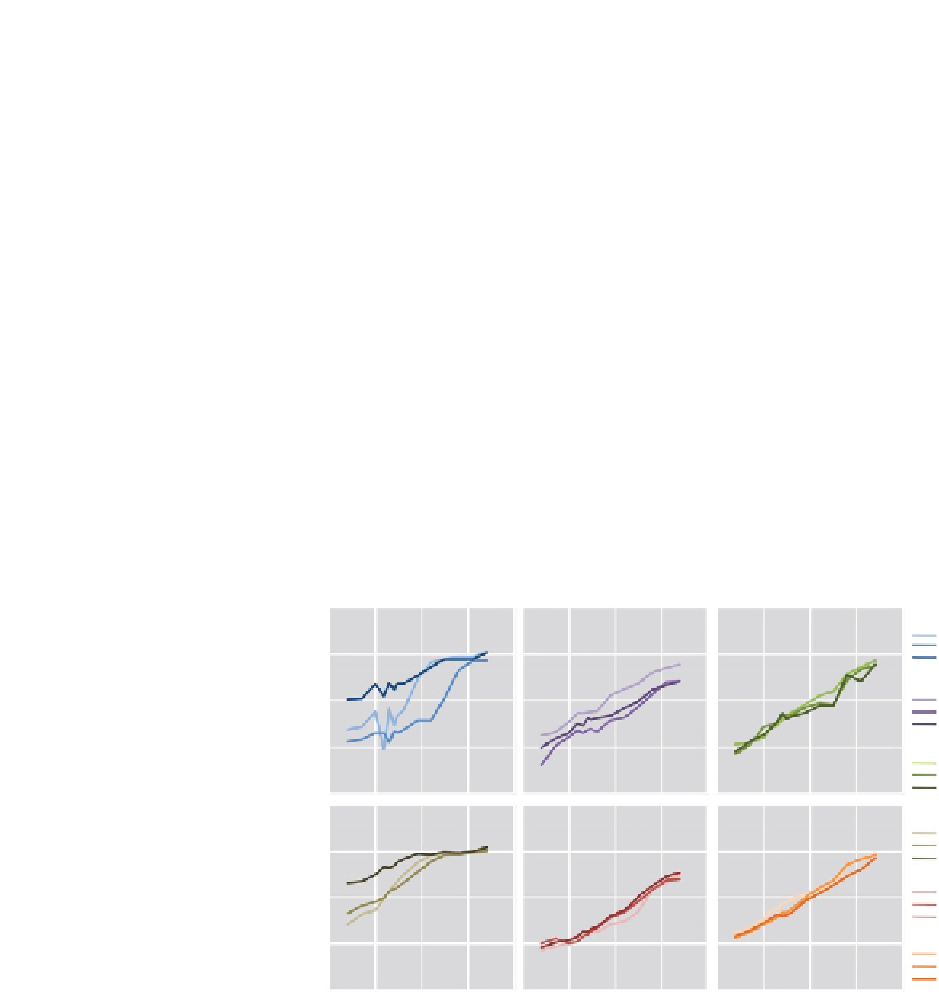Biology Reference
In-Depth Information
and its wide usage in a large number of laboratories. In general, differential 2D gel
image analysis is highly dependent on the use of reproducible experimental condi-
tions. Reproducibility is important not only for the consistent separation of proteins
in both dimensions of the 2DE but also to avoid analytical bias that can result from
technical issues, including rehydration of the IPG-strip, IEF and transfer from the
first to the second dimension.
A critical point in 2D gel analysis is the choice of the dyes used to stain the
separated proteins. For the quantitative in-gel determination of protein amounts, it
is important to be able to predict the behaviour of the dyes used, particularly with
respect to the response curve that characterizes the relationship between the protein
amount and the detectable signal. Ideally, the dye signal should be independent of
the protein sequence and linear over a wide range of protein concentrations. As indi-
cated in
Figure 3.5
, we have shown that Krypton and Flamingo, two highly sensitive
fluorescent dyes, meet the requirements of a lack of sequence bias, excellent sensitiv-
ity andwide dynamic range. Other frequently used dyes such as Coomassie, or staining
techniques using silver nitrate, do not fully meet these criteria and are therefore not
recommended.
Having resolved the proteome samples on 2D gels, state-of-the-art image analysis
techniques are used for differential 2D gel image analysis (
Berth
et al.
, 2007
). Here,
Test of diverse protein fluorescent dyes (sensitivity, dynamic range, sequence dependency/protein specificity)
10,000
Coomassie BB
BSA
CSA
b-LG
1000
Lava Purple
BSA
CSA
100
b-LG
10
Flamingo
BSA
CSA
b-LG
1
10,000
Coomassie SB
BSA
CSA
b-LG
1000
Sypro Ruby
BSA
CSA
100
b-LG
Krypton
10
BSA
CSA
b-LG
1
10
100
1000
10,000
10
100
1000
10,000
10
100
1000
10,000
Concentration (ng protein / mm
2
gel)
FIGURE 3.5
Test of diverse fluorescent dyes. Signal intensities over a range of concentrations are plotted
for six different dyes commonly used in 2DE. As can be seen, the sensitivity and dynamic
range is dependent on both the specific dyes and the protein species used for the assay (BSA,
bovine serum albumin;
b
-LG, beta-lactoglobulin; CSA, chicken serum albumin).



